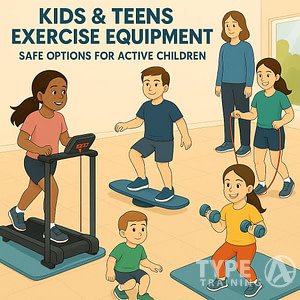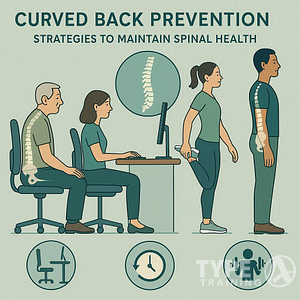Yoga is a valuable tool to support your child’s physical and mental growth and development. As a holistic practice, yoga can help nurture their physical health, emotional balance, and intellectual readiness in a supportive and non-competitive environment.
Through yoga, your child can explore their body movements and build spatial awareness, which in turn contributes to the development of motor skills, balance, and hand-eye coordination 1. Furthermore, yoga can improve your child’s strength, endurance, and aerobic capacity, providing benefits for their overall physical health and well-being 2.
Incorporating yoga into their routine can also support your child’s mental development. Research suggests that practicing yoga can help children improve their resilience, mood, and self-regulation skills when dealing with emotions and stress 3. By providing a calm and grounded space, yoga allows your child to clear their mind and more effectively manage stressors, fostering a strong foundation for lifelong mental health.
Popular posts:
Related: Private Yoga Instructor
The Foundations of Yoga for Child Development
Understanding Yoga and Its Relevance to Childhood
Yoga is a holistic practice that emphasizes physical, mental, and emotional well-being. For children, it can be a highly effective way to support their overall growth and development. Beginning at a young age, your child can benefit from the practice, as yoga helps develop important skills such as balance, flexibility, and coordination. The mental aspects of yoga, including mindfulness and self-awareness, are also essential for promoting a child’s emotional health and resilience.
Yoga is particularly relevant for children as it fosters a strong mind-body connection, enabling them to better understand their emotions and how they relate to their physical state. Engaging in regular practice can help:
- Improve balance and coordination
- Enhance mental focus and well-being
- Cultivate mindfulness and self-awareness
- Encourage a healthy lifestyle
Early Years: The Peak Time for Yoga Benefits
The early years of a child’s life, typically ages 3 to 5, are a crucial time for growth and development as their bodies and minds are highly receptive to new experiences and learning. This is an optimal period to introduce yoga to your child, capitalizing on their natural flexibility and curiosity.
By incorporating yoga into your child’s life during this time, you maximize the potential benefits, such as:
- Physical Development: Yoga helps build strength and flexibility by encouraging a range of movement that challenges and strengthens both large and small muscle groups. This promotes overall physical health and can lead to increased stamina and endurance.
- Cognitive Growth: Yoga requires focus and concentration, as children learn to hold poses and execute transitions between them. This mental engagement can enhance cognitive abilities such as attention, memory, and problem-solving.
- Emotional Maturity: Yoga promotes mindfulness and self-awareness, helping children to understand and manage their emotions effectively. Practicing yoga can lead to increased emotional regulation, empathy, and positive coping skills.
In conclusion, incorporating yoga into your child’s routine has the potential to significantly benefit their physical, mental, and emotional development. The early years are a crucial time to introduce this practice, with the potential to set a foundation for lifelong healthy habits and personal growth.
Advancing Physical Health Through Yoga
Improving Balance and Coordination
Yoga can be an excellent way for your child to improve their balance and coordination as it involves various poses that help them explore body movements. By practicing yoga regularly, your child will develop better spatial awareness and boost their motor skills. As they perfect each pose, they’ll find that their balance and coordination improve, leading to a stronger and more confident physical presence.
Enhancing Flexibility and Posture
One of the main reasons yoga is deemed highly beneficial for children is its impact on their flexibility and posture. The various stretching poses and movements incorporated into yoga routines encourage a wider range of motion, which can greatly help improve your child’s flexibility over time. Moreover, consistent yoga practice promotes better posture as it strengthens the muscles responsible for maintaining a healthy spine alignment. By participating in a yoga practice focused on flexibility and posture, your child will develop a more confident and healthy stance, consequently improving their overall wellbeing.
Strengthening Body and Boosting Fitness
Lastly, yoga supports your child’s physical growth by strengthening their body and boosting fitness levels. The combination of holding poses and performing gentle movements while focusing on proper breathing techniques helps to develop muscle strength and endurance. In turn, this increased strength and aerobic capacity enables your child to be more active in other aspects of their life, promoting improved physical and mental health.
In conclusion, by incorporating yoga into your child’s routine, you’re investing in their physical health and development. They will enjoy the benefits of improved balance, coordination, flexibility, posture, strength, and overall fitness as they continue to grow and mature.
Fostering Mental and Emotional Well-Being
Developing Focus and Attention
Yoga encourages children to be present and mindful, which can greatly improve their focus and attention. Through various poses and breathing exercises, children learn to concentrate on their body movements and the sensations they experience, sharpening their cognitive skills over time 1. This awareness can be transferred to their daily lives, helping them excel in both academic and social settings.
Managing Stress and Anxiety
In today’s fast-paced world, kids are not immune to stress and anxiety. Luckily, yoga has been found to be especially beneficial for these mental health problems 2. The combination of gentle movements, deep breathing, and mindfulness techniques helps children release tension, find a sense of calm, and better manage their emotions. Moreover, children learn effective and healthy ways to cope with their stress and anxiety, which can prevent future mental health issues from arising 3.
Cultivating Self-Regulation and Emotional Balance
Yoga teaches children valuable skills in self-regulation and emotional balance. By learning to identify and understand their emotions, kids are better equipped to adapt to changes at home, school, or with their peers. The practice of yoga encourages kids to connect with themselves and develop a stronger sense of self, leading to increased self-confidence and emotional stability 4.
Throughout their yoga journey, children gain important tools to support their mental health and well-being:
- Deep breathing exercises to stay calm during moments of stress
- Mindfulness techniques to improve focus and attention
- Improved self-awareness for better emotional regulation
Incorporating yoga into your child’s routine can have lasting and profound effects on their mental and emotional well-being, setting them up for success later in life.
Enhancing Academic Performance and Learning Abilities
Boosting Memory and Concentration for School Success
Yoga helps enhance your child’s learning abilities by improving their memory and concentration. A regular yoga practice encourages brain development and can improve their focus and mental alertness. For school-aged children, this translates to better academic performance and an increased ability to recall information during tests or classroom discussions. Research has shown that yoga can have a positive impact on focus, memory, self-esteem, and even classroom behavior.
Incorporate these yoga practices into your child’s daily routine:
- Meditation – Teach your child straightforward mindfulness techniques to clear their mind and enhance concentration.
- Breathing exercises – Simple breathing practices, like pranayama, can help calm the mind and improve focus.
- Balancing postures – Poses like tree pose or dancer’s pose promote concentration, body awareness, and coordination.
Yoga in Educational Settings
Schools are now recognizing the potential benefits of integrating yoga into their curricula. Many educational institutions have introduced yoga classes or after-school programs to help students cope with stress and improve their well-being. The regular practice of yoga has been shown to facilitate a positive environment for learning by tuning students into their physical, mental, and emotional needs.
Yoga in educational settings usually includes:
- Mindful movement – Gently stretching the body and becoming aware of bodily sensations.
- Breathing exercises – Focusing on the breath to enhance relaxation and concentration.
- Guided relaxation – Listening to calming stories or visualizations that help students release tension and stress.
By integrating yoga techniques in education, students can develop valuable self-regulation skills that are crucial for personal and academic success. Considering the potential improvements in physical health, mental clarity, and emotional well-being, incorporating yoga into your child’s routine could be a valuable tool to support their growth and development, both in and out of the classroom.
Building a Supportive Community Around Yoga
Role of Parents and Schools in Yoga Education
As a parent or an educator, you play a crucial role in introducing yoga to children. Your involvement can create a safe and encouraging environment for them to explore the benefits of practicing yoga. Schools and parents can collaborate to provide age-appropriate yoga classes for students. By doing so, you’re fostering a strong foundation for their physical and mental development.
To ensure a successful practice of yoga, you need to:
- Encourage and support your child’s curiosity about yoga.
- Provide them with comfortable clothes and a yoga mat for their sessions.
- Attend yoga workshops, classes, or events with them.
- Discuss the benefits of practicing yoga to keep their interest alive.
In addition, educators can continuously build upon the success of incorporating yoga into the school curriculum by:
- Offering yoga classes as part of physical education programs.
- Providing yoga-based relaxation and concentration techniques during breaks or before exams.
- Scheduling occasional workshops or seminars to encourage deeper exploration of yoga for students, teachers, and parents.
Integrating Yoga with Child-Friendly Resources
A supportive community around yoga enhances children’s experience and involvement. Integrating yoga with child-friendly resources can make the practice more appealing and engaging for young minds. These resources can include books, videos, games, and other media that are developmentally appropriate and relatable.
Here are some ideas for integrating yoga with child-friendly resources:
- Books: Select age-appropriate books that introduce yoga concepts, poses, and stories to children.
- Videos: Find instructional and fun yoga videos specifically designed for children of different age groups.
- Games: Use games that incorporate yoga poses to create a playful environment and encourage children to learn.
- Apps: Explore child-friendly yoga apps with interactive features and tailored instruction to suit their needs.
Remember that it’s essential to maintain a balance between the use of resources and hands-on practice. Practicing yoga under proper guidance and with consistent support from the community, including schools, parents, and media, helps create a nurturing and safe environment for your child’s growth and development.
Related: Private Yoga Instructor
Frequently Asked Questions About How Yoga Supports Your Child’s Development
What specific physical improvements can children experience through practicing yoga?
Children practicing yoga can experience an increase in body movements and spatial awareness. Additionally, yoga helps in developing essential motor skills by offering opportunities for balance exercises, hand-eye coordination, and strength-building movements.
In what ways does yoga enhance mental well-being in children?
Yoga can support your child’s mental well-being by creating a positive environment that calms and grounds them. It helps them to clear their minds from tension and stress, preventing future mental health issues. Studies also suggest that yoga may assist children with attention deficit hyperactivity disorder (ADHD) by improving inattentiveness, hyperactivity, and impulsivity.
Can yoga contribute to the development of a child’s memory and concentration?
Yes, regular practice of yoga can contribute to memory and concentration improvement in children. The focused and mindful nature of yoga teaches children to pay attention to their breath and body movements, which can transfer to an increased ability to concentrate and retain information.
How does the integration of yoga into a child’s routine benefit their academic performance?
Integrating yoga into a child’s routine can enhance academic performance by increasing their ability to focus and concentrate. Through regular practice, children become better equipped to manage stress and maintain a healthy mental state, which can ultimately provide a positive impact on their school performance.
What role does yoga play in nurturing a child’s emotional intelligence?
Yoga helps in nurturing a child’s emotional intelligence by emphasizing self-awareness and self-regulation. As children engage in mindful breathing and physical postures, they develop a deeper understanding of their emotions and learn to manage them more effectively. Furthermore, yoga encourages empathy and compassion, strengthening the emotional bonds between children and their peers.
Can regular yoga practice impact a child’s creativity and imagination positively?
Yes, regular yoga practice can positively impact a child’s creativity and imagination. When children practice yoga, they are encouraged to explore different shapes and movements with their bodies. This open-ended exploration fosters a sense of curiosity and creativity, allowing them to imagine new ways to express themselves both on and off the mat.













